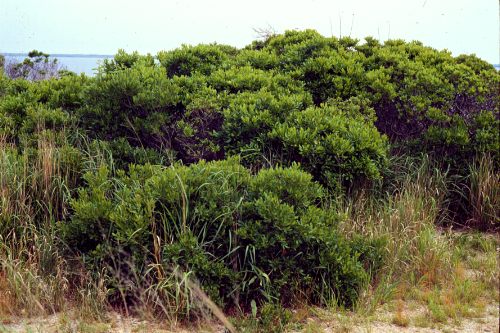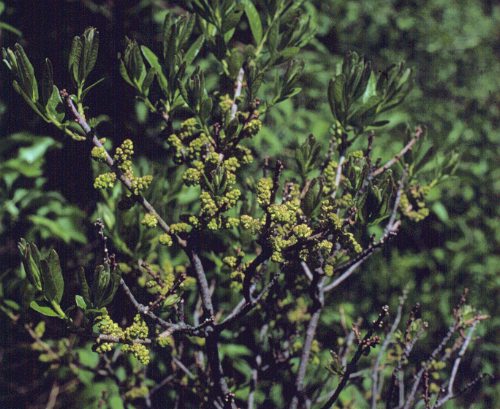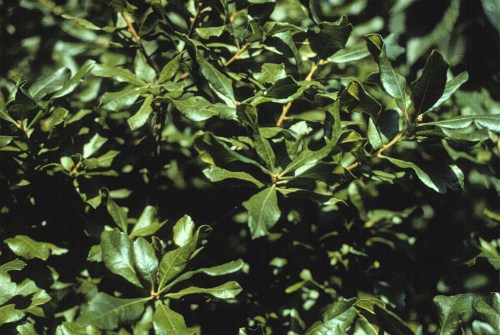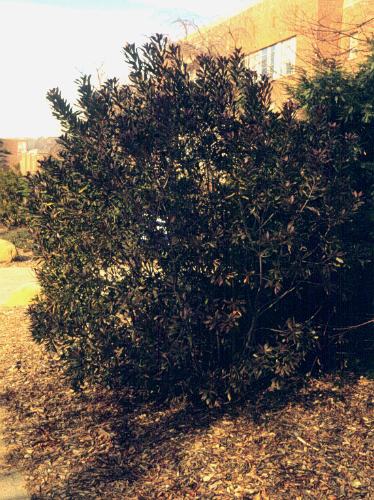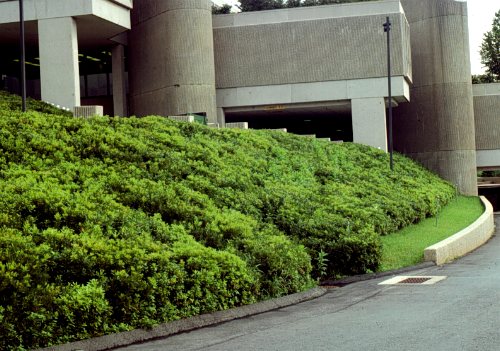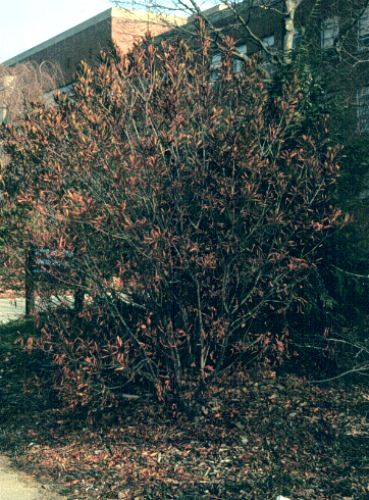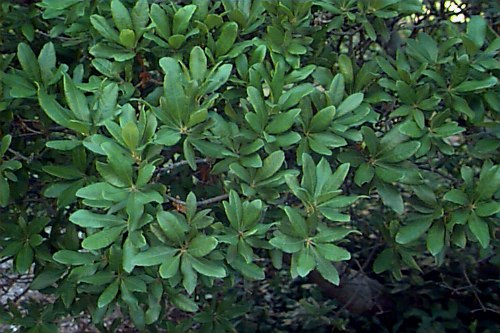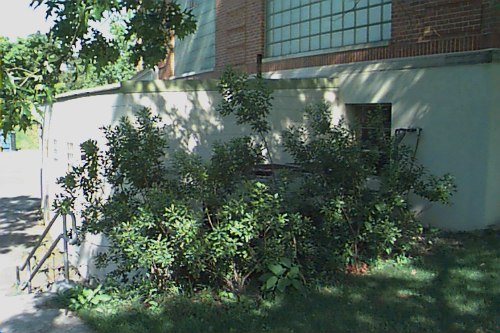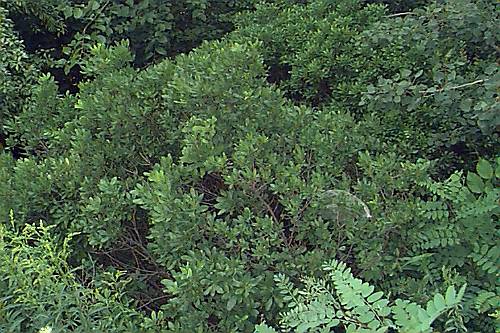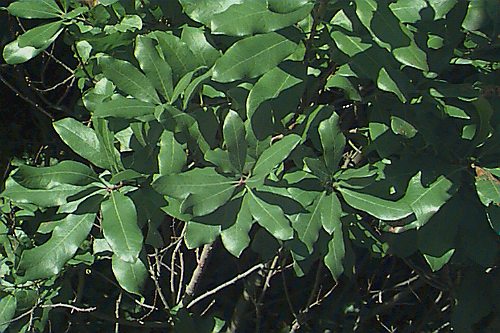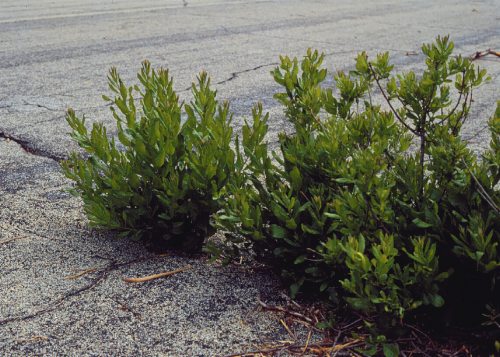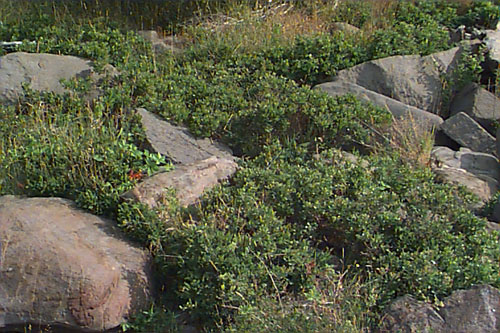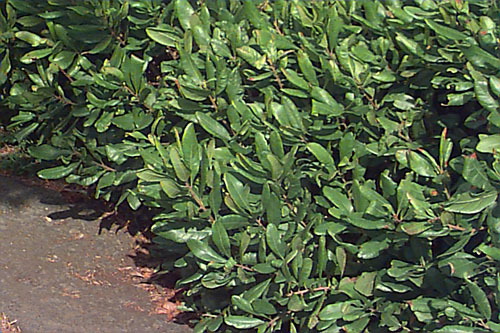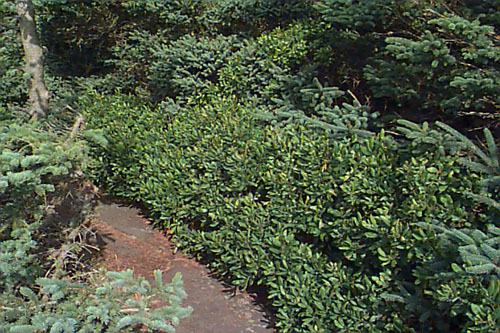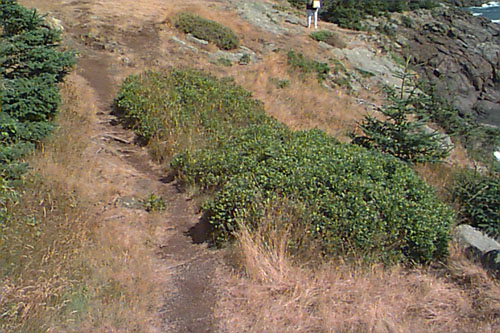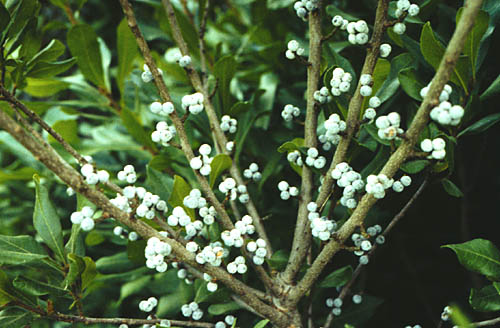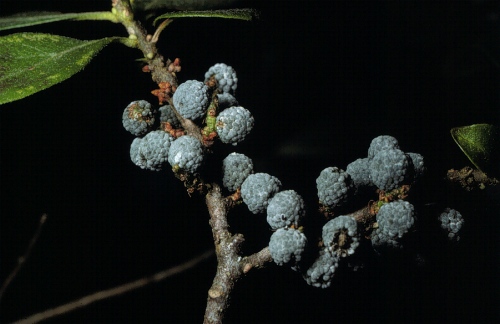Myrica pensylvanica
Northern Bayberry, Candleberry
Myricaceae
ExpandHabitat
- native to eastern United States and Canada
- zone 2
- primarily in coastal regions
Habit and Form
- a semievergreen to deciduous shrub
- typically 5' to 6'; can reach 10'
- upright, spreading branching habit
- shape is irregular to mounded
- multi-stemmed, suckering and colony-forming
- coastal plants are low-growing, often only 1' to 2' tall
Summer Foliage
- leaves are semievergreen to deciduous
- alternate leaf arrangement
- leaves are simple, obovate or oblong
- 1.5" to 4" long leaves
- 0.5" to 1.5" wide leaves
- shallow teeth at the leaf apex
- leaves are dark green and leathery
- underside of leaves pubescent
- leaves are leathery and aromatic when crushed
Autumn Foliage
- semievergreen with no real fall color
- leaves slowly turn bronze or tan and fall through the autumn and winter
Flowers
- dioecious with male and female plants; sometimes monoecious
- male flowers are yellow green catkins
- female flowers are single with no sepals or petals
- blooms in early spring
- not ornamentally important
Fruit
- female plants produce small, BB-sized waxy fruits
- color is chalky, gray-green
- wax from the fruit is used to make bayberry candles
Bark
- stems are slender
- bark is not important
Culture
- full sun to partial shade, but full sun is best
- does well on dry, sandy, infertile soils
- prefers acidic soils; avoid high pH soils
- tolerant of salt spray
Landscape Use
- shrub border
- as a foundation plant
- difficult growing sites
- seashore landscapes
- along roadsides
- mass plantings
- combines well with evergreens
- soil stabilization due to colonizing nature
Liabilities
- chlorosis on high pH soils
- not always easy to find in commerce
- about 20% of plants should be male to achieve good fruit set on female plants
- suckering
ID Features
- aromatic foliage and stems
- colonizing habit
- semievergreen, leathery leaves
- female plants with waxy gray-green fruits
Propagation
- by seed
- vegetative propagation by cuttings or division of suckering plants
Cultivars/Varieties
Very few selections of this wonderful native plant have been made, but sexed selections are sometimes offered by specialty nurseries. 'Myda', for example, is a fruiting female clone, while 'Myriman' is a male pollinator. In most cases, a mass of plants are installed to ensure pollination and fruiting.
'Morton' (Silver Sprite) - A new selection out of Illinois, this female fruiting clone forms a dense, broad-oval mound with gray-green leaves. It grows to 5' tall and wider.
